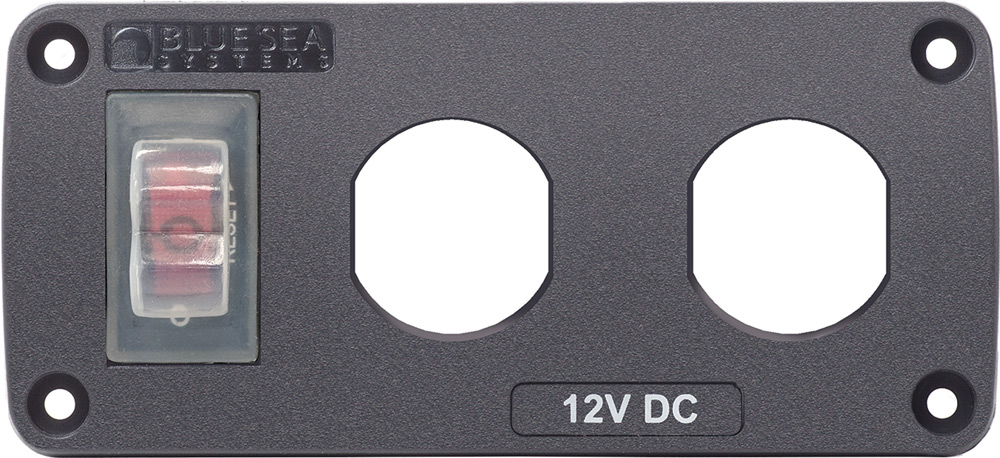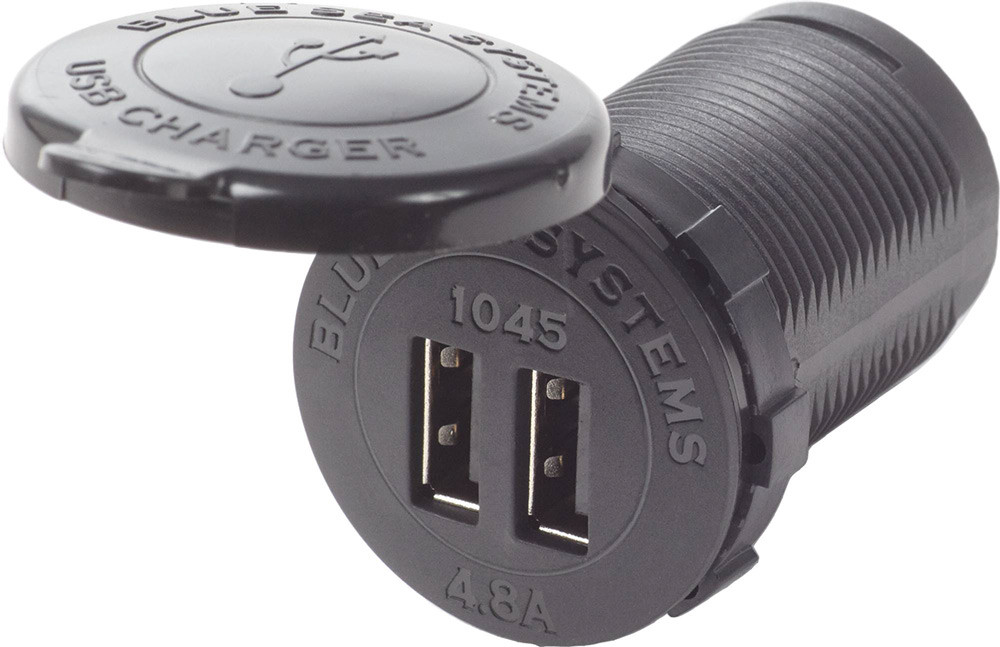Retrofitting projects
In a nod to our annual retrofitting issue, we are featuring several projects to inspire and consider for your own boat
Adding USB charging ports
USB ports have quietly become the universal charging port. Every smartphone, tablet, and nearly every other electronic device uses a USB cable for charging. The good old “cigarette lighter” socket has pretty much fallen out of fashion.
Replacing 12-volt cigarette lighter ports and adding new USB ports is very much a DIY project.
A USB cable and connector has four conductors— +5VDC, Ground, Data+ and Data-. The +5VDC is always 5 volts DC, but the current supplied is result of the negotiation between the charging source and the device to be charged. The device to be charged detects how much current the charger can supply, via the voltage levels on the data lines and adjusts its needs accordingly. This negotiation and the result is the reason your phone sometimes charges more slowly or more quickly. For all the stars of fast charging to align you need a charger that can actually supply the current required and has the intelligence to successfully negotiate with the device.
All this background is maybe interesting, but it all boils down to “buy a good charger.” I like the USB chargers from Blue Sea Systems, specifically the Fast Charge – Dual USB Charger Socket (#1045) for $46. This is a dual charger that can supply up to 4.8A DC, which is more than enough even for a couple of iPads.
If you are replacing a cigarette lighter socket, you can just replace with one of these Blue Seas chargers, but you should make sure that the old outlet was properly protected with a fuse or circuit breaker.
You may want to add a new charger or even a couple of them. Blue Seas makes a slick panel (#4364), $28, that has a 15-amp switch/circuit breaker and room for up to two chargers that would be a nice addition in a nav station. Even though this device has a built-in breaker, you should feed it from a breaker on your panel or via a fuse directly from your battery bank. A 15-amp breaker or fuse-fed with 12-gauge wire is adequate.
Source:
Blue Sea Systems, www.bluesea.com, 360-738-8230



Comments